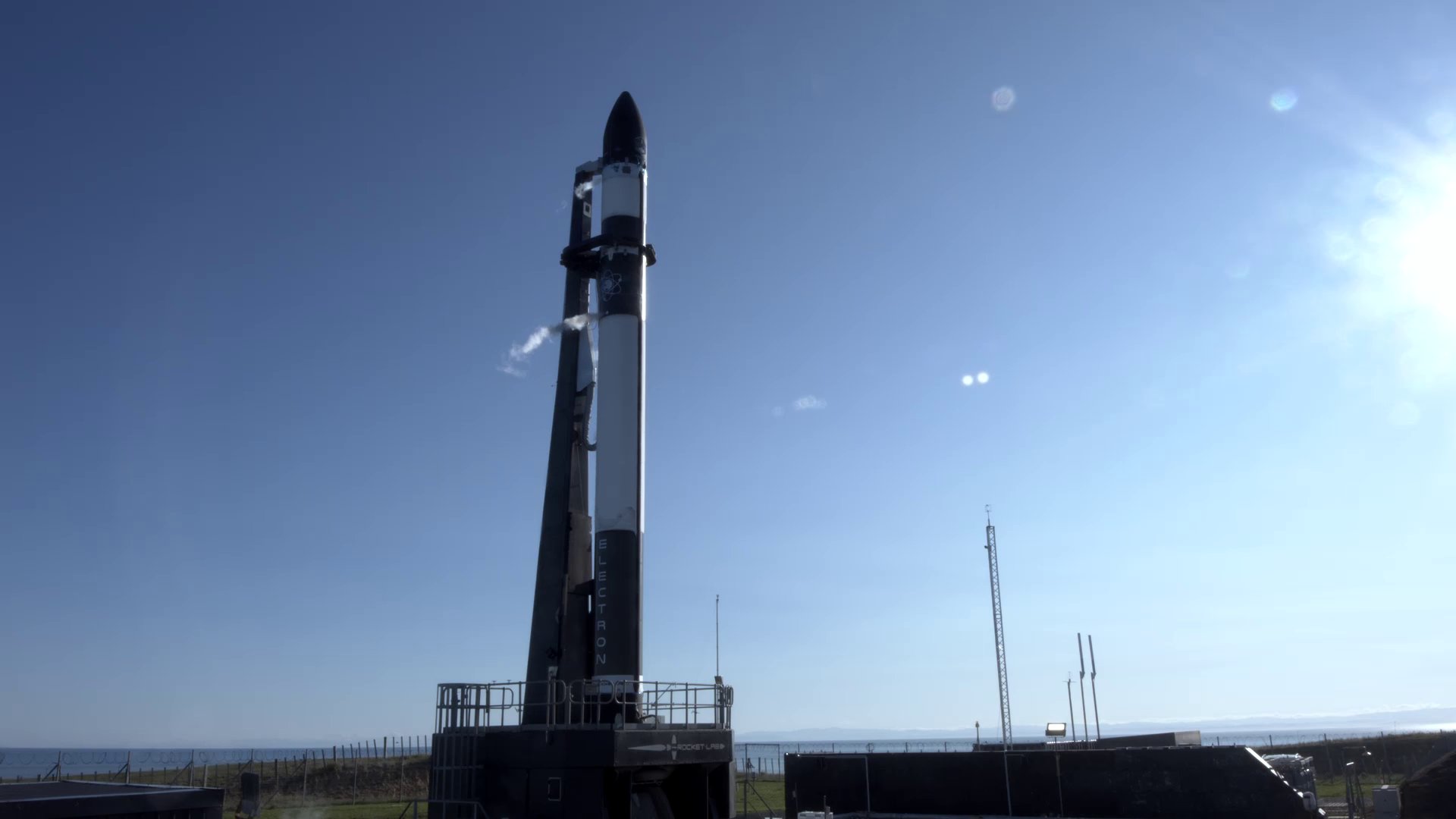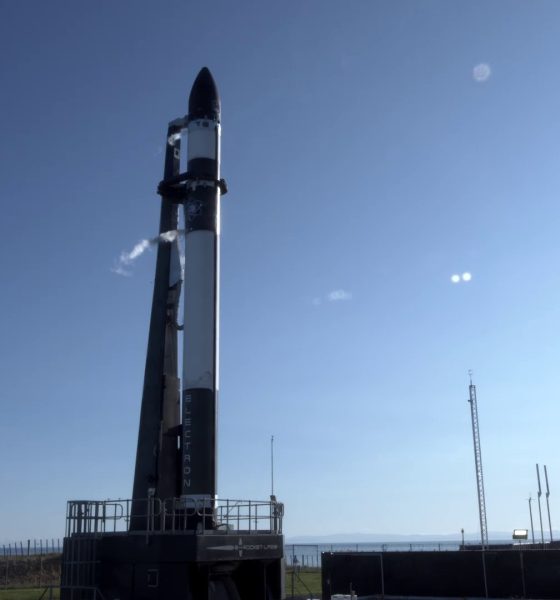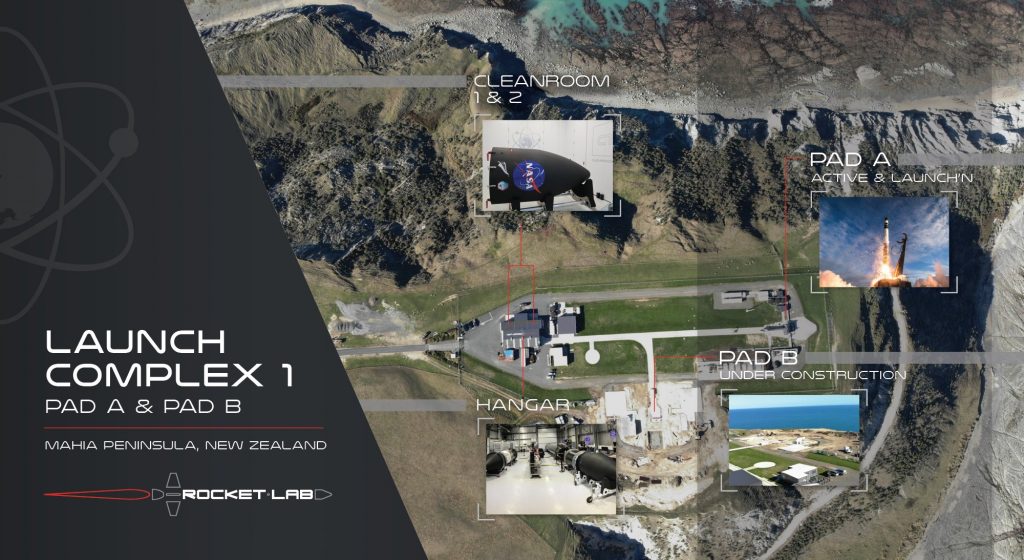

News
Rocket Lab’s 12th Electron mission “Don’t Stop Me Now” ready for launch
During the height of the global coronavirus pandemic, SpaceX and United Launch Alliance (ULA) missions from Florida were deemed “critical infrastructure” by the US federal government. This allowed the launchers to create safe working environments supporting rocket production and steady launch cadences. However, the nation’s most prominent launcher of smallsats, Rocket Lab, headquartered in Long Beach, California took a different approach halting all production and launch related operations. Although headquartered in the US, Rocket Lab manufactures its Electron rocket in Auckland, New Zealand, and launches from its Launch Complex 1 on New Zealand’s Mahia Peninsula.

Soon after the New Zealand government initiated a strict nationwide Level 4 lockdown requiring all residents, except essential workers, to remain at home on March 23rd, Rocket Lab stood down from operational missions. Unlike in the United States, the launching and production of rockets were not deemed critical in New Zealand and could not proceed. The lockdown went into place just five days ahead of the company’s scheduled twelfth launch of Electron on March 30th. Rocket Lab announced that the “Don’t Stop Me Now” launch (named in honor of a Rocket Lab board member that recently passed away) would be postponed but did not announce a new launch date as, at the time, it was unknown just how long the nationwide Level 4 lockdown would last.
In early May, Rocket Lab was allowed to return to operational status as pandemic restrictions began to lift in New Zealand. Company founder and chief executive officer, Peter Beck, announced on Twitter that the Electron rocket had returned to LC-1 to complete a wet dress rehearsal (WDR) ahead of announcing a new targeted launch date. Rocket Lab then confirmed that all WDR objectives had been successfully met and the twelfth Electron mission would be proceeding to a targeted launch date in early June.
That's a perfect wet dress rehearsal done and dusted for our 12th Electron mission! We're excited to be back on the pad and launching soon for @NatReconOfc, @NASA, and UNSW Canberra Space. Stay tuned for launch window dates soon! pic.twitter.com/o8oM4fe5jO— Rocket Lab (@RocketLab) May 7, 2020
Rocket Lab was quick to return to launch procedures as the Electron vehicle and LC-1 remained in “a state of readiness throughout the COVID-19 lockdown.” In a statement issued soon after the successful WDR, the company assured that “enhanced health and safety processes will be implemented for this launch in line with government health advice to protect Rocket Lab personnel. These measures include physical distancing, split shifts, maintaining contact tracing registers, and enhanced cleaning procedures.”
pic.twitter.com/N9x9saYPEe— Rocket Lab (@RocketLab) June 9, 2020
The twelfth “Don’t Stop Me Now” Electron mission is designated as a rideshare which will carry multiple smallsat payloads to orbit for NASA, the National Reconnaissance Office (NRO), and University of New South Wales (UNSW) Canberra Space. Electron’s Kick Stage propelled by the 3D-printed Curie engine will deliver the ANDESITE (Ad-Hoc Network Demonstration for Extended Satellite-Based Inquiry and Other Team Endeavors) spacecraft developed by teams at Boston University under NASA’s CubeSat Launch Initiative (CSLI). It will use a series of minisatellites to measure the electrical currents of the Earth’s magnetic field from low Earth orbit. The payload carried for the NRO, Rapid Acquisition of a Small Rocket (RASR) contract vehicle, follows a previously NRO-dedicated mission launched in January 2020. Finally, the twelfth launch of the Electron will also support the M2 Pathfinder (M2PF) communications satellite to low Earth orbit UNSW Canberra Space.
The next mission from #UNSWCBR Space, M2 Pathfinder, is launching on @RocketLab's Mission 12 “Don’t Stop Me Now” on June 11.
M2PF is a significant next step in flight heritage for our program of developing intelligent space systems and the development of Australian capability. pic.twitter.com/dseWRUzhzP— UNSW Canberra (@UNSWCanberra) May 29, 2020
“Don’t Stop Me Now” has a fourteen day launch widow extending from June 11th to June 24th with a daily launch opportunity during a two-hour window 04:43 – 06:32 UTC (00:43 – 02:32 EDT). The Rocket Lab team is currently counting down to the first launch attempt scheduled for Thursday, June 11th at the top of the window at 04:43UTC (00:43 EDT) from LC-1 in Mahia, New Zealand. Fifteen minutes ahead of the launch attempt, a live stream will be posted to Rocket Lab’s social media accounts and made available on the company’s website: www.rocketlabusa.com/live-stream.
Check out Teslarati’s newsletters for prompt updates, on-the-ground perspectives, and unique glimpses of SpaceX’s rocket launch and recovery processes.

News
Tesla starts showing how FSD will change lives in Europe
Local officials tested the system on narrow country roads and were impressed by FSD’s smooth, human-like driving, with some calling the service a game-changer for everyday life in areas that are far from urban centers.

Tesla has launched Europe’s first public shuttle service using Full Self-Driving (Supervised) in the rural Eifelkreis Bitburg-Prüm region of Germany, demonstrating how the technology can restore independence and mobility for people who struggle with limited transport options.
Local officials tested the system on narrow country roads and were impressed by FSD’s smooth, human-like driving, with some calling the service a game-changer for everyday life in areas that are far from urban centers.
Officials see real impact on rural residents
Arzfeld Mayor Johannes Kuhl and District Administrator Andreas Kruppert personally tested the Tesla shuttle service. This allowed them to see just how well FSD navigated winding lanes and rural roads confidently. Kruppert said, “Autonomous driving sounds like science fiction to many, but we simply see here that it works totally well in rural regions too.” Kuhl, for his part, also noted that FSD “feels like a very experienced driver.”
The pilot complements the area’s “Citizen Bus” program, which provides on-demand rides for elderly residents who can no longer drive themselves. Tesla Europe shared a video of a demonstration of the service, highlighting how FSD gives people their freedom back, even in places where public transport is not as prevalent.
What the Ministry for Economic Affairs and Transport says
Rhineland-Palatinate’s Minister Daniela Schmitt supported the project, praising the collaboration that made this “first of its kind in Europe” possible. As per the ministry, the rural rollout for the service shows FSD’s potential beyond major cities, and it delivers tangible benefits like grocery runs, doctor visits, and social connections for isolated residents.
“Reliable and flexible mobility is especially vital in rural areas. With the launch of a shuttle service using self-driving vehicles (FSD supervised) by Tesla in the Eifelkreis Bitburg-Prüm, an innovative pilot project is now getting underway that complements local community bus services. It is the first project of its kind in Europe.
“The result is a real gain for rural mobility: greater accessibility, more flexibility and tangible benefits for everyday life. A strong signal for innovation, cooperation and future-oriented mobility beyond urban centers,” the ministry wrote in a LinkedIn post.
News
Tesla China quietly posts Robotaxi-related job listing
Tesla China is currently seeking a Low Voltage Electrical Engineer to work on circuit board design for the company’s autonomous vehicles.

Tesla has posted a new job listing in Shanghai explicitly tied to its Robotaxi program, fueling speculation that the company is preparing to launch its dedicated autonomous ride-hailing service in China.
As noted in the listing, Tesla China is currently seeking a Low Voltage Electrical Engineer to work on circuit board design for the company’s autonomous vehicles.
Robotaxi-specific role
The listing, which was shared on social media platform X by industry watcher @tslaming, suggested that Tesla China is looking to fill the role urgently. The job listing itself specifically mentions that the person hired for the role will be working on the Low Voltage Hardware team, which would design the circuit boards that would serve as the nervous system of the Robotaxi.
Key tasks for the role, as indicated in the job listing, include collaboration with PCB layout, firmware, mechanical, program management, and validation teams, among other responsibilities. The role is based in Shanghai.
China Robotaxi launch
China represents a massive potential market for robotaxis, with its dense urban centers and supportive policies in select cities. Tesla has limited permission to roll out FSD in the country, though despite this, its vehicles have been hailed as among the best in the market when it comes to autonomous features. So far, at least, it appears that China supports Tesla’s FSD and Robotaxi rollout.
This was hinted at in November, when Tesla brought the Cybercab to the 8th China International Import Expo (CIIE) in Shanghai, marking the first time that the autonomous two-seater was brought to the Asia-Pacific region. The vehicle, despite not having a release date in China, received a significant amount of interest among the event’s attendees.
Elon Musk
Elon Musk and Tesla AI Director share insights after empty driver seat Robotaxi rides
The executives’ unoccupied tests hint at the rapid progress of Tesla’s unsupervised Robotaxi efforts.

Tesla CEO Elon Musk and AI Director Ashok Elluswamy celebrated Christmas Eve by sharing personal experiences with Robotaxi vehicles that had no safety monitor or occupant in the driver’s seat. Musk described the system’s “perfect driving” around Austin, while Elluswamy posted video from the back seat, calling it “an amazing experience.”
The executives’ unoccupied tests hint at the rapid progress of Tesla’s unsupervised Robotaxi efforts.
Elon and Ashok’s firsthand Robotaxi insights
Prior to Musk and the Tesla AI Director’s posts, sightings of unmanned Teslas navigating public roads were widely shared on social media. One such vehicle was spotted in Austin, Texas, which Elon Musk acknowleged by stating that “Testing is underway with no occupants in the car.”
Based on his Christmas Eve post, Musk seemed to have tested an unmanned Tesla himself. “A Tesla with no safety monitor in the car and me sitting in the passenger seat took me all around Austin on Sunday with perfect driving,” Musk wrote in his post.
Elluswamy responded with a 2-minute video showing himself in the rear of an unmanned Tesla. The video featured the vehicle’s empty front seats, as well as its smooth handling through real-world traffic. He captioned his video with the words, “It’s an amazing experience!”
Towards Unsupervised operations
During an xAI Hackathon earlier this month, Elon Musk mentioned that Tesla owed be removing Safety Monitors from its Robotaxis in Austin in just three weeks. “Unsupervised is pretty much solved at this point. So there will be Tesla Robotaxis operating in Austin with no one in them. Not even anyone in the passenger seat in about three weeks,” he said. Musk echoed similar estimates at the 2025 Annual Shareholder Meeting and the Q3 2025 earnings call.
Considering the insights that were posted Musk and Elluswamy, it does appear that Tesla is working hard towards operating its Robotaxis with no safety monitors. This is quite impressive considering that the service was launched just earlier this year.








